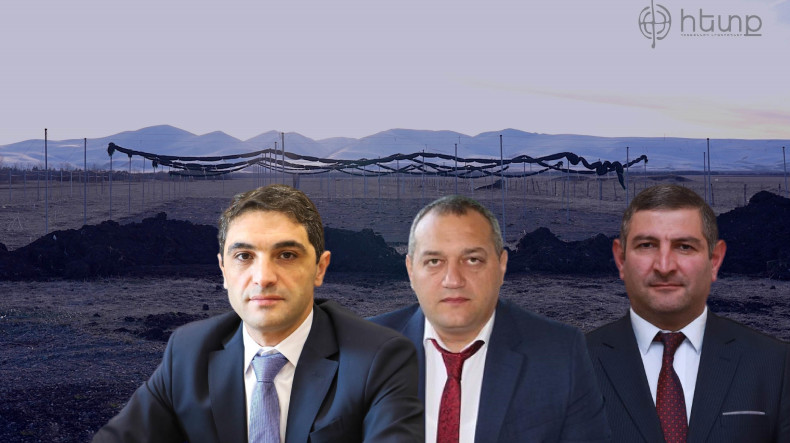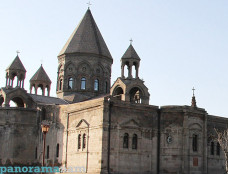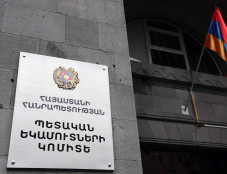
Four out of six greenhouses built with international grants destroyed in Armenia
The Armenian Ministry of Environment, along with the two NOCs operating under it, could not manage four greenhouses built in the country with international grants. Two of them were destroyed and subsequently restored, while the other two were destroyed twice and have not yet been restored. It is unclear who is responsible for their restoration, Hetq investigative media outlet reports.
The ministry attributes the destruction to unfavorable weather conditions, while the company that built the greenhouses blames forestry practices.
Armenia, which is highly vulnerable to climate change, has undertaken efforts to expand forested areas and reduce carbon emissions. As part of these efforts, the Armenian government is implementing several programs financed by international donors.
The project "FOREST RESILIENCE OF ARMENIA, ENHANCING ADAPTATION AND RURAL GREEN GROWTH VIA MITIGATION" is implemented with funds from the Green Climate Fund of the UN Framework Convention on Climate Change. The Government of Armenia, the Austrian Development Agency, the Autonomous Province of Bolzano, the Armenian Office of the World Wide Fund for Nature, and the Food and Agriculture Organization (FAO) also participate in its implementation. The total budget for the eight-year project is 18.7 million US dollars. According to information provided by the Ministry of Environment, the Green Climate Fund allocated 2,194,080,000 drams (around 5.5 million dollars) for the project. The state institution "Environmental Project Implementation Office" of the Ministry of Environment is responsible for its implementation.
The project aims to reduce fuelwood demand and introduce bio-sustainable and climate-adapted forest management skills, expand forest areas by 2.5 percent, reduce the fuelwood demand of rural communities by at least 30 percent, promote sustainable and climate-adapted forest management, and ensure technology transfer to rural communities, the private sector, and government agencies in the context of a forest-energy interconnected approach.
The target areas of the project are the Lori province in the north of Armenia and Syunik in the south. These two provinces were selected based on forest type, population density, poverty level, degree of vulnerability to climate change, and impact on important forest ecosystems.
Six greenhouses, each with an area of 500 square meters, were to be built to grow saplings with a closed root system as part of the "Climate change mitigation and adaptation through forest investments and technology transfer" component.
The greenhouses were built in the territories of the Hrazdan, Sisian, and Tashir branches of Hayantar SNOC, which in 2022-2023 were handed over to the management of Hayantar SNOC. However, four of them never served their purpose and did not operate. The two greenhouses built in Tashir were destroyed twice by strong winds, the last time on December 28, 2023. The greenhouse built in Sisian was also destroyed this winter because it could not withstand the snow load. Only the greenhouses built in Hrazdan Forestry are operating.
The Ministry of Environment, in response to Hetq's inquiry as to why the greenhouses did not operate, stated the greenhouses built by the state institution "Environmental Project Implementation Office" of the Ministry of Environment within the framework of the grant project were transferred to Hayantar SNOC (hereinafter: SNOC) management.
"On the night of December 17 and 18, 2023, due to heavy snow and wind in the Sisian region, the greenhouses under the management of the Sisian Forestry branch were completely damaged and destroyed. On December 28 of the same year, the greenhouses under the management of the Tashir Forestry branch were similarly destroyed by strong winds. They were not suitable for operation, and their reconstruction was also not deemed expedient," Sergo Atanesyan, Secretary General of the Ministry of Environment, stated in a written form.
Who built the greenhouses?
The tender for the construction of the greenhouses was announced on June 2, 2022. Two organizations participated in the tender: "Father and Son Beglaryans" LLC with a price offer of 73,980 thousand drams, and "VES Group" LLC with a price offer of 78,980 thousand drams (around 200 thousand dollars).
The Ministry of Environment informed us that the bid submitted by "Father and Son Beglaryans" LLC was rejected because it did not meet the requirements of the invitation to the purchase procedure, specifically due to the absence of a bid security document.
On June 13, 2022, VES Group LLC was recognized as the selected participant of the purchase procedure, being the only participant meeting the requirements of the invitation. A contract for the purchase of goods was signed with VES Group LLC on July 15.
VES Group LLC was founded on June 2, 2020, with Vardan Aslanyan as the founder and sole shareholder. According to Aslanyan, the destruction of the greenhouses in Tashir was due to natural causes, while the destruction in Sisian was attributed to human factors, not snow or poor construction quality. The greenhouses and the equipment in them were tested and accepted by a special committee consisting of 8-10 people. Aslanyan asserted that if the greenhouses had been poorly constructed, the committee would not have accepted them.
For the development of the technical task for the construction of the greenhouses, the Ministry of Environment based their guidelines on the decision of the Government of the Republic of Armenia No. 1612-L, dated November 14, 2019, which set the standards for small and medium greenhouse farms. This government decision aimed to increase farmers' incomes in agriculture through state support by partially reimbursing costs for businessmen.
The decision mainly concerned the cultivation of agricultural crops, fruits, and vegetables, and did not specifically address greenhouses for growing plants or seedlings. However, the annex to the government decision specified that hydroponic greenhouses should have a wind resistance of at least 90 km/h (25 m/s) and a snow load capacity of at least 30 kg/m².
Why were the greenhouses destroyed in Sisian?
On the night of December 17 and 18, 2023, due to heavy snow, the two greenhouses on the balance sheet of Sisian Forestry were destroyed. According to the Ministry of Environment, the reason for the collapse of the greenhouses was solely due to weather conditions. However, the founder of the construction company, Vardan Aslanyan of VES Group, blames the employees of Sisian Forestry as well.
"The reason for the collapse of the Sisian greenhouses is the result of the negligence of the forestry branch of Sisian," says Vardan Aslanyan. According to him, the Sisian region experienced a snow load of 50-70 kg per square meter. The greenhouses were built according to a special project and were equipped with technical measures designed to reduce the pressure of precipitation. These greenhouses have two-layer membrane covers with a special system that injects air between the layers, which stretches and strengthens the polyethylene, allowing precipitation to fall off quickly. Additionally, a dual-purpose stove, which could operate on both gas and diesel, was installed to melt the snow on the polyethylene during heavy snowfall.
Sisian Forestry claimed that the greenhouses did not operate because the area is not gasified. However, Aslanyan argues that the stoves should have worked with diesel in the absence of gas. "Why neither that nor the other one was used? That's why the collapse occurred," he stated. According to Aslanyan, the failure to start the furnaces is a consequence of the absolute negligence of the forestry staff.
Newsfeed
Videos






























